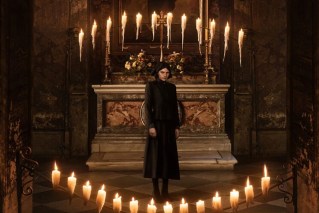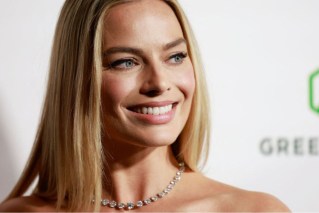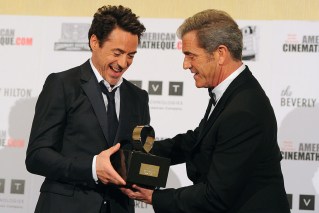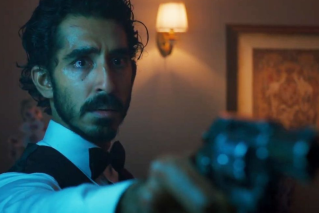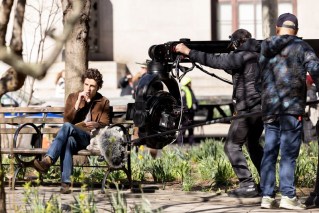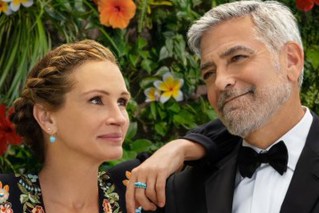Wonder Woman 1984 wears its heart on its sleeve but misses the moment
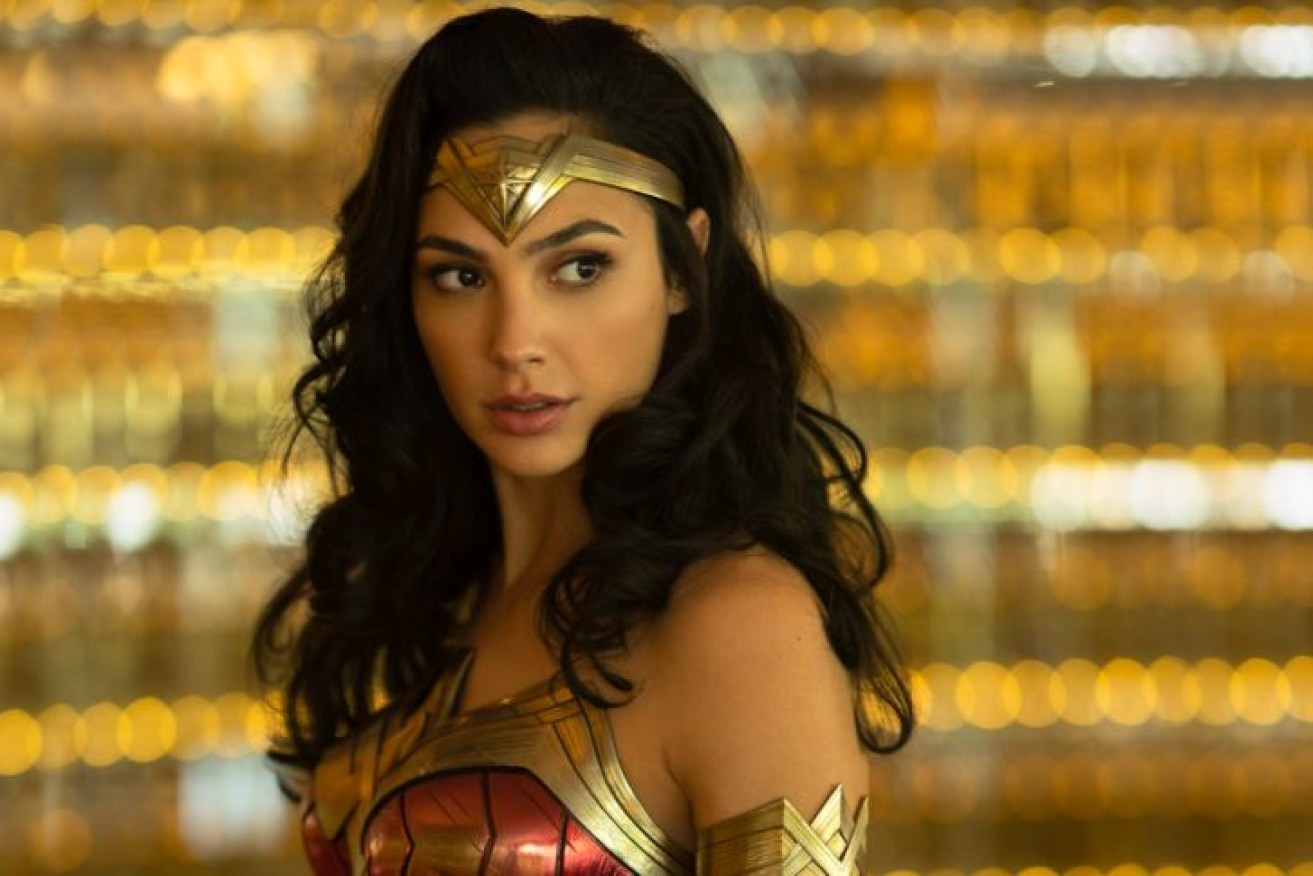
Gal Gadot was thinking about quitting acting, then got a call from director Zack Snyder (Justice League) asking her to audition. Photo: Warner Bros.
Arriving at the end of a disastrous year for movie exhibition, Warner Bros’s endlessly delayed Wonder Woman sequel is starting to look like the dying gasp of the blockbuster as we know it – especially in the US, where the film has already sounded industry doomsday chimes by debuting on HBO Max.
On the strength of this movie, however, it’s a struggle to mourn the potential extinction of tentpole cinema – at least in its long-dominant, market-suffocating superhero form.
Like its 2017 predecessor, a multimillion-dollar corporate product that rode the conversation around representation to a sense of cultural significance, the new film, again directed by Patty Jenkins, is a big, cornball superhero adventure that – to its credit – wears its heart on its bulletproof bracelets.
But its well-intentioned escapism also feels decidedly anachronistic in the current climate.

The young warrior princess Diana (played by 12-year-old Lilly Aspell) takes part in an Olympics-style contest. Photo: Warner Bros.
After a short, action-packed prologue set in the distaff paradise Themyscira, with warrior women jousting to composer Hans Zimmer’s giddy choral chants, we find the immortal Diana Prince (Gal Gadot) in 1984, a demigoddess among the big hair, break dancing and nuclear armament that has become all the rage.
The early scenes have a refreshingly light, almost goofy tone that’s at odds with the prevailing bombast of the DC universe, recalling some of the gee-whiz earnestness of both the Richard Donner films and the playful spirit of their ill-fated sibling, Supergirl (1984).
When she’s not rescuing little girls at the mall, Diana is a dashingly attired cultural anthropologist at the Smithsonian, where she’s found a sisterly bond with new colleague Barbara Minerva, a klutzy, mousey loner played by Kristen Wiig with the unmistakable vibe of Michelle Pfeiffer in Batman Returns.
(Any notions that their relationship might be more are quickly, and sadly, left to the audience’s imagination.)

Diana Prince (Gal Gadot) and geologist Barbara Minerva (Kristen Wiig) meet at the Smithsonian Institute where they both work, and become friends. Photo: Warner Bros.
Also bringing some blustery, comic book-sized personality is Pedro Pascal, swapping his stoic Mandalorian gear for a douchey blond wig and pastel pinstripes as Max Lord, a hubristic entrepreneur who is a mixture of wannabe oil tycoon and charlatan televangelist.
Together, the three of them do battle for the Dreamstone, a suitably outlandish, Monkey’s Paw-like magic crystal that has the power to realise the wildest dreams of those who touch it – at a considerable spiritual cost.
Barbara soon has superpowers and a deliciously misandric attitude, while Diana wishes to be reunited with her long-dead lover Steve Trevor – a returning Chris Pine, whose romantic chemistry with Gadot lent the original movie much of its charm.
But it’s Max Lord who gets the biggest boost, effectively turning himself into a human genie capable of granting the wishes of anyone he touches – magnetism that turns to megalomania as he grasps for control of satellite television and nuclear arms, an ’80s cocktail that proves far richer than the toothless jabs at the decade’s fashion.
There’s an inevitably Trumpian aspect to his power, in his ability to attract the seemingly disenfranchised with appeals to the common interest, however hollow the promises.
But there’s also something deeply uncomfortable about this portrayal.
Max has apparently constructed his megawatt persona to obscure the fact that he’s a financially strapped single father and a man at wit’s end, and it’s hard not to sympathise with the desperation of his scheme or his capacity to ignite the very human desires – whatever shape they take – of those who flock to him.

Chilean-born actor Pedro Pascal (The Mandalorian, Game of Thrones) plays Maxwell Lord, a personification of 1980s greed. Photo: Warner Bros.
While Jenkins appears to position the corruption of the American Dream – the worst excesses of the decade’s economic boom – as the real villain, there’s a curious disconnect between the film’s nobler instincts and the way they’re executed on screen.
(Similarly, the ease with which the movie carelessly tosses around loaded imagery from the Middle East, or one particularly egregious, ill-considered aside about the Irish Troubles, is worrying.)
As the world threatens to come apart at the seams – fuelled by the unchecked wishes Max grants en masse – Wonder Woman 1984 makes some odd tonal choices, offering scenes of mass unrest as a problem to be stomped out by a superhero playing hall monitor.
“This world was a beautiful place just as it was,” says Diana, a line that lands with a thud amid the film’s heaving, disorderly throngs.
The film has a tendency to demonise those with a grievance, without interrogating the power of its virtuous heroine – a princess hailing from a secret, archaic society who invariably has the best interests of the populace at heart.
All of which might be less noticeable had Wonder Woman 1984 delivered more momentum and spectacle.
But at a punishing two-and-a-half hours – with barely an action sequence to be found in the first half – the film is often a slog, infrequently enlivened by the usual weightless, slow-motion skirmishes set against panoramic CGI.
Occasional images – Wonder Woman lassoing herself to a jet airliner, a romantic flight across a firework-lit skyline – have a certain pop art appeal, but they don’t always gel with the story’s messier elements.

Before she directed the first Wonder Woman, Patty Jenkins was best known for the 2003 biopic Monster, starring Charlize Theron as serial killer Aileen Wuornos. Photo: Warner Bros.
Meanwhile, Barbara’s descent from man-beating super-femme to shrill, generic villain squanders Wiig’s comedic potential – imagine the over-the-top, Faye Dunaway fun she could’ve had here – though she does fight the typically onerous showdown in what seems to be a cast-off Jellicle cat costume, so the movie isn’t without its camp value.
So too the film’s final sequences, which serve up some of the cheesiest moments of superhero cinema in recent memory.
As Gadot admitted of her infamous Imagine debacle, “Sometimes you want to do a good deed and it’s just not the right good deed.”
Wonder Woman 1984 is in cinemas from December 26

